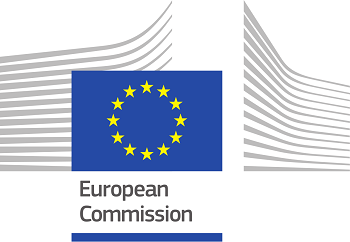EU Green Deal
April 28, 2022 | Written by GreenSoft Technology, Inc.
EU Announces Largest Ever Restriction of Toxic Chemicals

Roughly 5,000 to 7,000 chemicals will be regulated in the EU by 2030
On April 25, the European Commission released its plan to enact the largest ever restriction on toxic chemicals as part of the zero-pollution goal of the EU Green Deal.
The plan, called the Restrictions Roadmap, is a staff working document prepared by the European Commission services and does not necessarily represent the views of the European Commission. It is in no way legally binding, but rather provides a view into future EU environmental compliance policy. Implementing the Roadmap will require the joint commitment and collaborative efforts of Member States, the European Commission, and the European Chemicals Agency (ECHA).
The roadmap outlines plans to use existing laws to review and implement restrictions for large substance categories, such as all flame retardants and bisphenols, as well as all forms of PVC. It will also direct resources to apply restrictions on PFAS ‘forever chemicals’, along with around 2,000 other harmful chemicals.
In total, the European Environmental Bureau (EEB) has estimated the Restrictions Roadmap will lead to the restriction of roughly 5,000 to 7,000 chemicals by 2030. Some chemicals on the Restrictions Roadmap list were already facing EU restrictions, but most are new.
‘The Sick Six’ chemical groups to be restricted
The Restrictions Roadmap will use a group approach to regulating chemicals, in which the most harmful member of a chemical family defines legal restrictions for the whole family. That should end an industry practice of tweaking chemical formulations slightly to evade restrictions, according to the EEB.
The EEB singles out 6 groups of chemicals that it dubs the ‘Sick Six’. These have two things in common: they are highly hazardous but still widely used in European consumer goods.
The ‘Sick Six’ chemicals to be restricted are:
- Polyvinyl Chloride (PVC) and its additives
PVC is commonly used in used in a very wide range of products, from toys and inflatable products (pools, water sports accessories, trampolines) to packaging and food contact materials, such as food wraps, to artificial Christmas trees, textiles like ‘vegan leather’, furniture, shoes, building materials, etc.).
- PFAS (non-essential uses)
PFAS are commonly used in a wide variety of consumer items, from takeaway and other food packaging to non-stick coatings, stain-free and waterproof clothes to sun-cream and cosmetics, even dental floss.
- Bisphenols, including BPA
BPA is found in a wide range of consumer goods, such as sports equipment, CDs, DVDs, automobile parts and food containers, such as reusable beverage bottles and reusable plastic tableware.
- Flame retardants
These chemicals are required by law to be used in a broad range of household goods, including childcare products (such as crib mattresses), furniture (e.g. children’s high chairs) and textiles (e.g. car seats), building materials and electronics “to delay fires”. However, they have a dubious record of actually slowing fire.
- Chemicals in childcare products that cause cancer, genetic mutation or harm the reproductive system (CMRs)
CMRs are commonly used in baby/children’s pacifiers, teething toys, bathing products, general body care products (such as baby soaps, shampoos or creams), feeding products (such as children kitchenware or cutlery), etc.
- Toxic chemicals in single use nappies / diapers
Most of the paper pulp used for manufacturing baby nappies comes from the US and is highly contaminated, a problem known by industry. It is the same pulp used in menstrual products and incontinence nappies.
Next steps for the regulations
The Restrictions Roadmap is a political commitment; its implementation will require the joint commitment and collaborative efforts of Member States, the European Commission, and ECHA.
The Restrictions Roadmap seeks to leverage the pre-existing authority of the REACH Regulation to accomplish its stated goals. The proposed group approach to regulating chemicals requires changes to the REACH Regulation and product laws, which the European Commission has proposed to be in place by between 2025 – 2027. Details on the timeline for proposed REACH regulation changes can be found here.
Member states and the European Commission will examine each proposed chemical ban in detail. If either decides to take a restriction forward, it will then be submitted to the ECHA for the agency’s scientific opinion.
This opinion then goes to the European Commission for a decision on whether to approve or reject it. This decision still needs to then be approved through an anonymous, qualified majority vote by member state officials who are part of an opaque body called the REACH Committee, which is formally part of the European Commission.
The committee’s decisions can be vetoed by the European Parliament or the European Council, but this power is rarely used. Once approved, the ban will likely have a “transition period” of months or years before coming into force.
More details on the Restrictions Roadmap announcement and the ‘Sick Six’ chemicals to be restricted can be found here.

